Visors in helmets are designed to protect your eyes from debris, mud, or water when you’re riding. They also stop sun glare when the sun is high in the sky. However, one problem that many riders encounter is their visor fogging up during a ride. This can be very frustrating because it blocks your vision and makes it difficult to see anything on the trail ahead of you. Luckily there are some simple steps that will help keep your visor clear so you can enjoy an enjoyable ride!
Table of Contents
Why do helmet visors fog up?
A lot of people seem to be concerned about fogging up. There are several reasons why helmet visors might not work the way that they should, but in this article I’d like to focus on how you can stop your visor from fogging up.
Number one reason is because of temperature changes. If it’s hot out, and you go inside somewhere cold (like a gym or home) your visor can fog up pretty quickly. The next reason is your natural breath. This may seem like a weird thing, but if you’ve ever gone outside on a cold day and breathed out of your mouth, or talked with someone who has bad breath – it will fog up the visor pretty quickly.
Number three: visors aren’t made to be used in all types of weather. Some visors are made to be more breathable than others, so if you’re riding in a hot climate and your helmet is covered with fog it’s probably because the air isn’t able to circulate through.
Another reason why the visor could fog up quickly has nothing to do with how well it works or doesn’t work; instead this one has to do with the way you’re wearing it. If your helmet doesn’t fit properly, or is too small for your head – this could cause air flow problems.
Number five: how well does the visor seal around your face? Some helmets come with a really good seal that keeps out all of the wind; if yours isn’t doing that, then your visor will fog up pretty quickly.
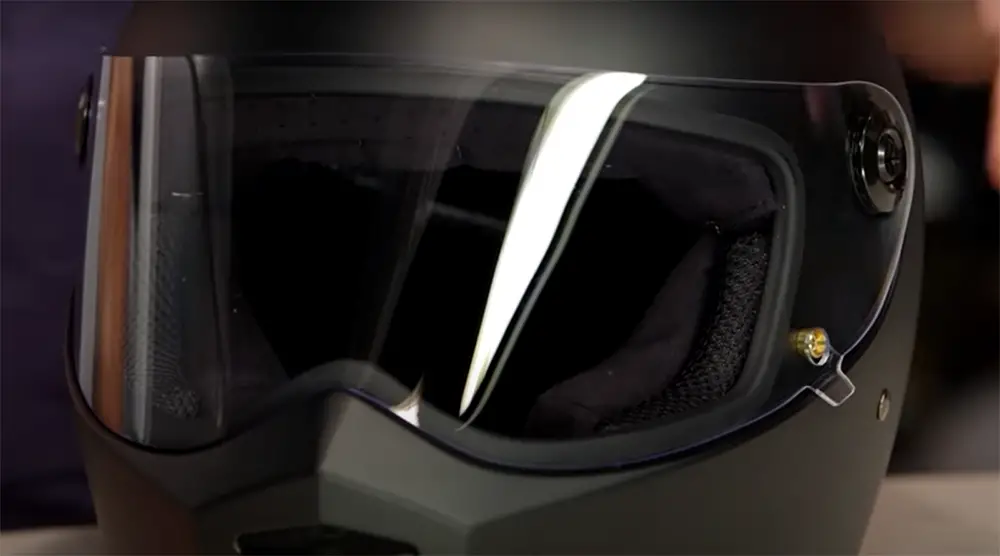
Number six: what material is the visor made out of? Some materials are more permeable than others; if you’re wearing a cheap one it’s probably not going to work very well. Lastly – some helmets come with shields on them, but they don’t have any anti-fog coating on them. If this is the case, you’re definitely going to have problems with fogging up – but it’s an easy fix!
Anti-Fog Solutions
Anti-Fog Inserts
Another option would be to buy anti-fog inserts. These are little discs that you can put inside of your helmet visor so it’s much easier for the air flow to go through, which will prevent fogging up. They’re only around $12 online at any sports store.
One thing to keep in mind: anti-fog inserts and spray cleaners will only work for so long. If your visor is really foggy you’ll need a new one, because the inserts don’t do anything about that problem.
Another option would be wearing something over your nose or mouth; this can cause some problems though because if you’re wearing something over your face, it can be difficult to breathe.
Don’t forget to wipe off your visor when you get back inside! If there is any water on it, this could cause problems with fogging in the long run; make sure that if you’re wearing glasses underneath your helmet they are anti-fog too (because of condensation).
Pinlock Lens Inserts
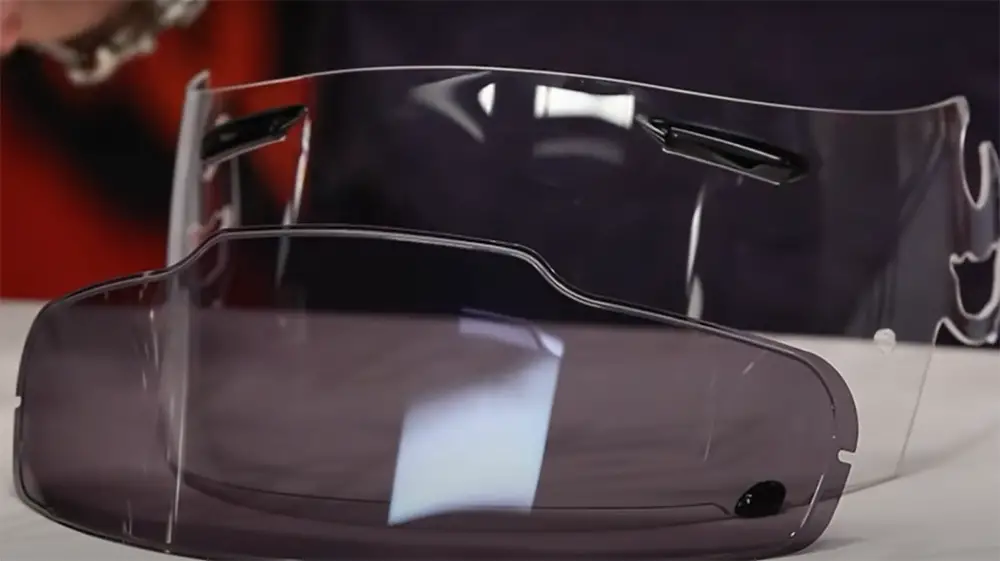
If you’re really struggling with fogging up, you may want to invest in Pinlock lens inserts. These are designed specifically for people who have problems with their visors fogging up when they ride; they can be a little bit pricey but if it means that your visor will stop fogging up completely it might be worth it.
Some helmets come with Pinlock lens inserts already installed, but if yours doesn’t – you can easily take the visor off and replace it with one that is designed for fogging up! It’s important to note though that these can only work in certain conditions; they don’t do anything about air flow around your visor, so if you’re struggling with that then it probably won’t help.
There are other options to consider too! For instance, some people prefer wearing goggles for biking instead of helmets because they can breathe better around their face; this might be a good alternative for you if these problems sound familiar. You should also keep in mind how much you’re wearing over your head when you go biking. If it’s really cold, consider bringing a scarf or covering yourself with a blanket to keep the wind off of your face!
Anti-Fog Sprays
Another option would be using anti-fog sprays on the inside of your visor. These are usually around $10 and can last a really long time, but you have to make sure that if they do end up working then you don’t use them with any other kind of lens insert because this could cause problems!
One thing to keep in mind is that these sprays are usually only around for so long because you have to reapply them regularly. You can buy a special spray designed just for this, but it might be an extra expense!
It’s also important to note that if your visor has really bad fogging up then anti-fog sprays won’t solve the problem. You’ll need to replace your visor if it’s really foggy, because these sprays are only meant for normal use.
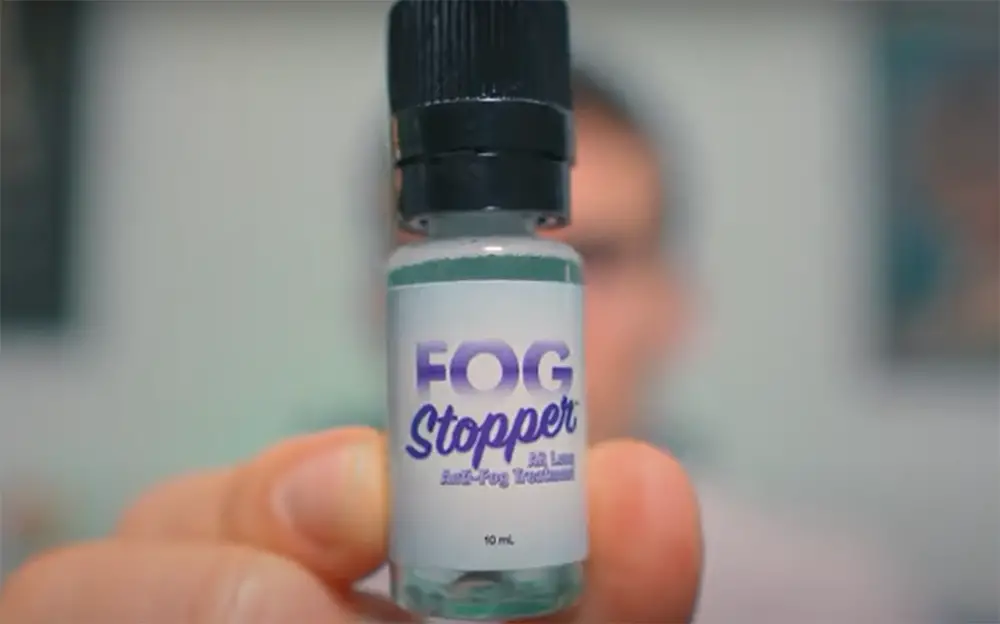
Anti-Fog Coating
There are a few different options you can try, but the best will depend on your helmet and what type of anti-fog coating it has. If you have an anti-scratch coating built into the lens, then this is likely to be effective at preventing fogging as well. If you have an anti-fog coating built into the lens, this might help with fogging but not for as long.
For helmets without any special coatings then you will need to apply some sort of product that coats the inside of your visor and keeps it from misting up. Some people recommend using toothpaste or shaving cream; however, these can be difficult to remove and leave a messy residue.
There are many products you can buy that work effectively at keeping your visor from fogging up such as: anti-fog sprays; pre-applied coatings; or even wipes made specifically for this purpose. The effectiveness of all the above will depend on how much you are willing to spend.
If you don’t want to buy any of these products, there is a simple solution that costs nothing and works well if done properly: air blowers. All helmets have an air intake hole for the face shield ventilation system; however, it often gets covered up by your clothing or equipment which can lead to fogging. If you can keep this hole free from obstructions, your helmet will not fog up as much and the wind passing through it will prevent misting even more.
Foggy Mask
The first step is knowing what causes your mask to fog up in the first place – and there are two major culprits: heat loss, which can happen when you ride through cold air, or humidity from breathing around moist breathable insulating materials like Gore-Tex or fleece. When it comes to fogging up on the inside of your mask, humidity is usually the culprit – so keep an eye out for anything that may be bleeding or releasing moisture into your seal around the helmet visor. Our favorite fix for this one? A good anti-fog spray applied directly onto either side of the lens! We recommend anti-fog sprays that claim to be “permanent” or those specifically designed for masks.
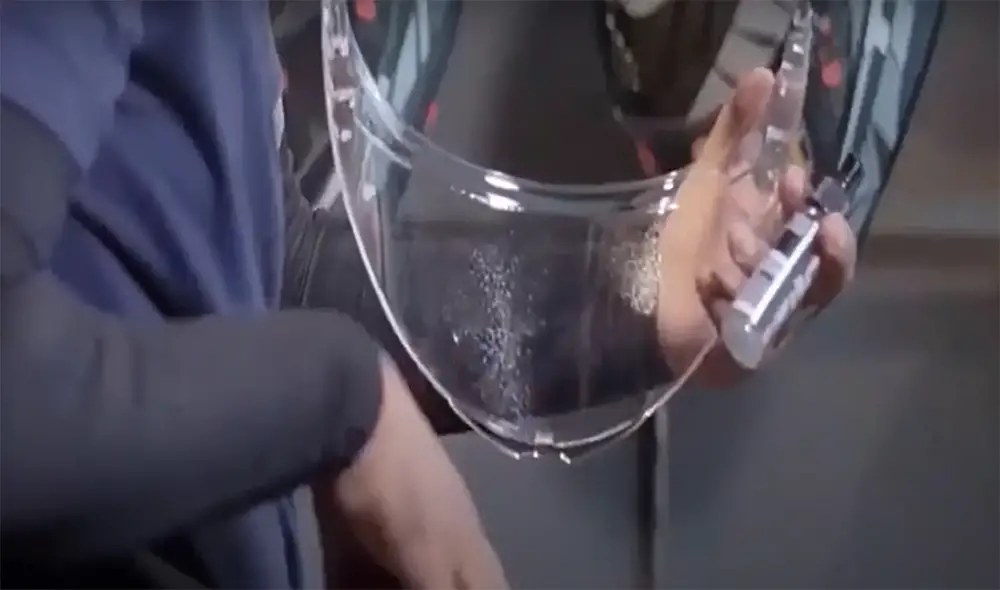
Anti-Fog Wipes
There are anti-fog wipes that can be used to clean your helmet visor. These come in handy on days when the humidity is extremely high and it may not be possible for you to remove your helmet just so that you can wipe away any fog from your visor. You can also use the anti-fog wipes to clean your visor of any dirt or debris that may have collected on it. These are perfect for maintaining a clear view of what’s in front of you while riding so that you don’t get into an accident because visibility is low. Another option is to invest in a face shield that has anti-fog properties. These are specially designed visors which will prevent fogging from occurring. You can also use toothpaste for this purpose, but make sure you wipe away all of the residue before riding or driving your bike as it may cause irritation to the eyes and skin if any is left behind on the visor.
Water Repellents
There are three common types of water repellents that can be found in various products. These include wax, silicone and PTFE (a type of Teflon). However, none of these protect for a long time against fogging on your helmet visor.
Silicone water repellents are typically used on vehicles, but they can be found in products for other purposes. You’ll find them most often with ski equipment or diving masks.
Waxes are typically used on cars, but they can also be found with ski equipment.
PTFE is the only type of water repellent that really prevents fogging for a long time.
It’s important to note that not all water repellents work equally well or last forever. Sometimes you’ll need to reapply the product after a few uses.
You’ll also want to check the instructions for each product, because some products are only recommended on certain surfaces. For instance, PTFE is often used on helmets visors or motorcycle windshields – but not ski goggles.
If you don’t see a water repellent that works well for your needs, consider making one at home. You can also put baby or cooking oil on the visor and wipe it off until you have a clean finish.
Another option is to use alcohol, but be sure not to do this too often because it could damage your helmet’s material over time. If you need other tips for keeping your visors from fogging up, contact us.
Clean with Dishwashing Soap
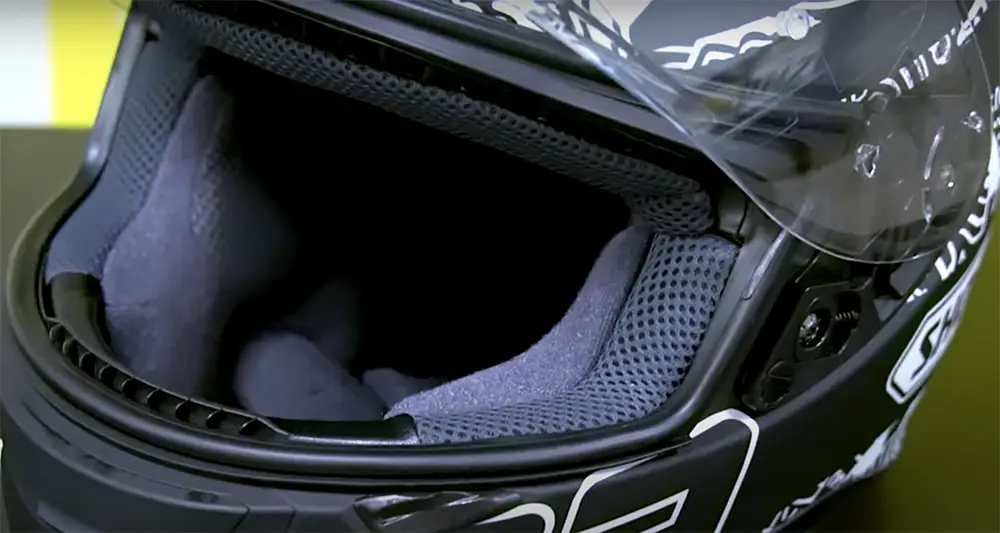
A well known way to fight fogging is with dishwashing soap. The ingredients in dishwashing soaps break down water molecules and help reduce air bubbles between the visor and your face, helping you see better when riding by reducing misting on the inside of your shield . It also leaves an anti-fog coating behind after it evaporates, which can help prevent fogging for a little while.
Increase Ventilation Helmet
Increased ventilation helmet manufacturers are constantly working to improve their products. They do not want people coming back with complaints that helmets fog up, which is becoming a more common problem in colder climates. And even if your helmet doesn’t have vents, you can still find ways of increasing ventilation on the inside. If possible, try wearing breathable fabrics against your skin when riding. Wearing breathable fabrics is especially important on days when it’s windy and cold.
One of the most effective ways to prevent helmet visor fogging is to increase ventilation. This entails adding more air vents and increasing airflow when possible. You can also add a small fan that will blow in fresh, dryer air from outside your helmet while you wear it on hot days. Finally, there are various strategies for insulating a helmet that does not have adequate ventilation. If you do not own a better ventilated bike helmet, then you can try using strategies for insulating your helmet.
You may be wondering how to increase the airflow inside of your current helmet if it already has vents. This is one option, however, there are other options as well. You can wear a scarf around your neck to reduce fogging in addition to breathing through your mouth. Or, you can try wearing breathable fabrics against your skin, which is especially important when it’s windy and cold outside. If this doesn’t help much, there are other options for insulating helmets that do not have adequate ventilation built-in.
FAQs
What does my visor fog up?
Visors are made of either polycarbonate or Lexan plastic which has the same effect as your car windshield. Visor fogging happens when moisture gets trapped between the visor and helmet’s face shield, resulting in a blurry view. Your visor will most likely begin to fog up before you notice rain droplets on it. It can also be hard to notice the fogging that occurs when you are wearing goggles. A visor with a fresh anti-fog coating provides moisture resistance, allowing your view of the road ahead to remain clear even if it is raining or misting outside.
What can I use to clean my helmet visor?
Use a microfiber cloth to wipe the visor clean. Use a damp cloth with warm water to remove any dirt or debris. If you are in a rush, use some window cleaner. If you do not have a window cleaner, use a damp cloth with vinegar. Do not clean the visor when it is hot outside as this will cause streaking. Do not use paper towels or other harsh materials to clean the visor. Always avoid using any type of abrasive material as this will scratch your helmet.
Does toothpaste work as anti fog?
No, toothpaste just contains some antibacterial components that can help with the bacteria build up on your visor. It may also prevent further smearing as you wipe it off but definitely is not a permanent solution to fogging.
Can a helmet be washed?
A helmet cannot be washed. It is made out of multiple materials that may not mesh well with water or other harsh chemicals, so it must be carefully cleaned to prevent corrosion and damage. If you are wondering how often your helmet needs this type of cleaning, the answer depends on where you live. In places surrounded by trees or high humidity, a helmet should be cleaned once a month or more often. In dryer climates, it can go up to six months without being washed.
How do you defog a helmet visor?
There are a few ways that you can defog a helmet visor. One way is to use a commercial anti-fog product. These are usually applied to the inside of the visor and create a thin film that helps to prevent water droplets from adhering to the surface. Another way to defog a helmet visor is to use a homemade solution of vinegar and water. This can be applied with a cloth or paper towel and will help to break down the water molecules so they don’t stick to the surface. Finally, you can try using soap and water. This will create a barrier between the water and the visor so it won’t be able to adhere as easily. Whichever method you choose, be sure to clean the helmet visor afterwards so that you don’t end up with a dirty or streaky surface.
Why is my pinlock fogging up?
There are a few reasons why your pinlock might be fogging up. One reason is that the temperature inside the helmet is different from the temperature outside. This can happen if you’ve been riding in cold weather and then stop for a break in a warm area. The sudden change in temperature can cause the air inside the helmet to expand, which pushes out the moisture and causes the pinlock to fog up. Another reason for fogging is if the pinlock isn’t properly seated against the visor. This can happen if you didn’t put the pinlock on correctly or if it’s become loose over time. Finally, some materials that are used to make pinlocks are more prone to fogging than others. If you’re having trouble with your pinlock fogging up, try replacing it with a different type of material.
Are there any products that can be used to prevent a helmet visor from fogging up?
Yes, there are products that can be used to prevent a helmet visor from fogging up. One example is the Fog Free Visor Insert from Pine Ridge Archery. This product is designed to fit inside your helmet visor and uses a unique gel material to help prevent fogging. Another option is the No-Fog Cloth from Clean Lens. This cloth can be used on any type of lens, including helmet visors, and will help to keep them clear and free of fog.
What are some of the best ways to keep a helmet visor from fogging up?
Some of the best ways to keep a helmet visor from fogging up include using a commercial anti-fog product, using a vinegar and water solution, or using soap and water. You can also try wearing a balaclava or scarf over your mouth and nose to help keep warm air from escaping and causing the visor to fog up. Finally, make sure that the pinlock is properly seated against the visor so that there is no gap for moisture to escape.
What are some tips to prevent your helmet visor from fogging up?
There are a few things you can do to help prevent your helmet visor from fogging up. First, make sure the visor is clean before you put your helmet on. Second, try using an anti-fog spray or gel on the inside of the visor. Third, open the vent holes on your helmet to allow air to circulate. And fourth, if it’s cold outside, breathe through your nose instead of your mouth to help keep the visor dry.
How can I stop my helmet from fogging up during winter?
There are a few things you can do to help reduce or eliminate fogging on your helmet’s visor during winter riding.
- Use an anti-fog treatment: You can buy commercial anti-fog treatments, or make your own by applying a small amount of dish soap to the inside of the visor and buffing it until it’s evenly distributed. Rinse thoroughly with clean water before using the helmet.
- Make sure your visor is clean: A dirty visor will be more prone to fogging than a clean one. Be sure to clean both the inside and outside of the visor regularly.
- Keep your head warm: If your head is cold, the air you’re exhaling will be colder as well, and more likely to condense on the inside of your visor. Wearing a balaclava or other face covering can help keep your head warmer and reduce fogging.
- Crack open the visor: In very cold weather, opening the visor slightly can help prevent fogging by allowing some of the warmer air from inside the helmet to escape. Of course, you’ll want to be sure that the visor is still closed enough to provide adequate protection in case of an accident.
Follow these tips and you should be able to greatly reduce or eliminate fogging on your helmet’s visor during winter riding.
Can you use Windex on a helmet visor?
Yes, you can use Windex on a helmet visor. In fact, many riders swear by this method as one of the best ways to keep a visor from fogging up. Simply spray a small amount of Windex on the inside of the visor and spread it around with a soft cloth. Be sure to rinse thoroughly with clean water afterwards so that no residue is left behind. You may need to reapply every few hours, but this method should help keep your visor clear and fog-free.
Can you ceramic coat a helmet visor?
Yes, you can ceramic coat a helmet visor. This will help to protect the visor from scratches and other damage, and can also help to reduce fogging. Ceramic coating is a specialized process that should be done by a professional, so be sure to take your helmet and visor to a qualified shop for this service.
What should you clean your visor with?
To clean your visor, you should use a soft, damp cloth and avoid using any harsh chemicals or cleaners. You can also remove any dirt or debris by gently brushing it away with a soft-bristled brush. If your visor is extremely dirty, you may need to soak it in warm, soapy water for a few minutes before scrubbing it clean. Be sure to rinse the visor thoroughly after cleaning and allow it to air dry completely before putting it back on.
Useful Video: Anti Rain & Anti Fog Helmet Visor Review – Does it work
Conclusion
You have learned a number of ways on how to stop helmet visors from fogging. Now it is time for you to decide which method works best for your case and start using it today! Follow the tips mentioned above so that you can enjoy riding without having to deal with problems such as poor visibility, bad odor in helmets, coldness, and helmet visor fogging.



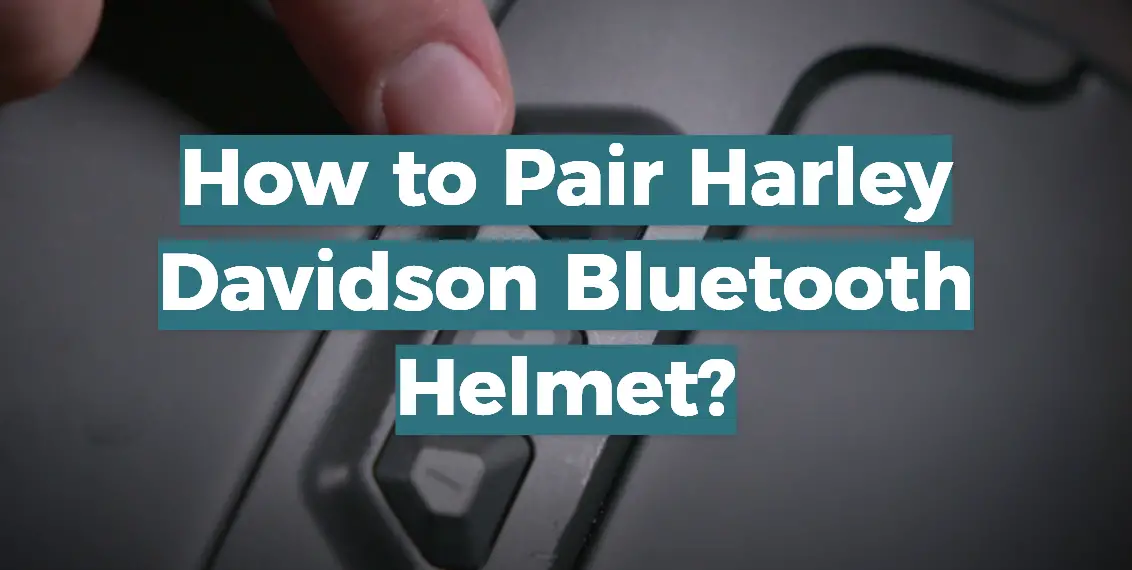


Leave a Reply